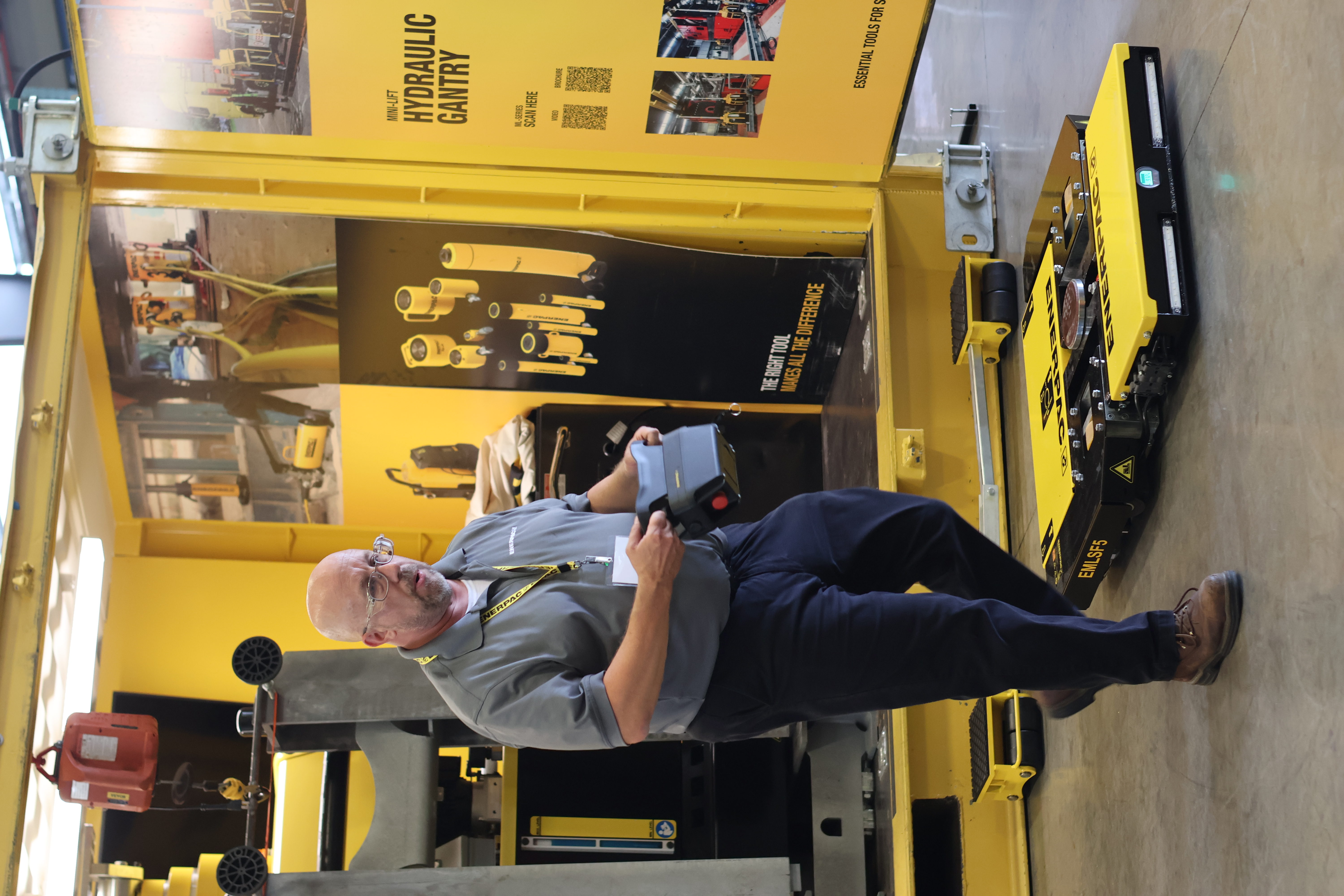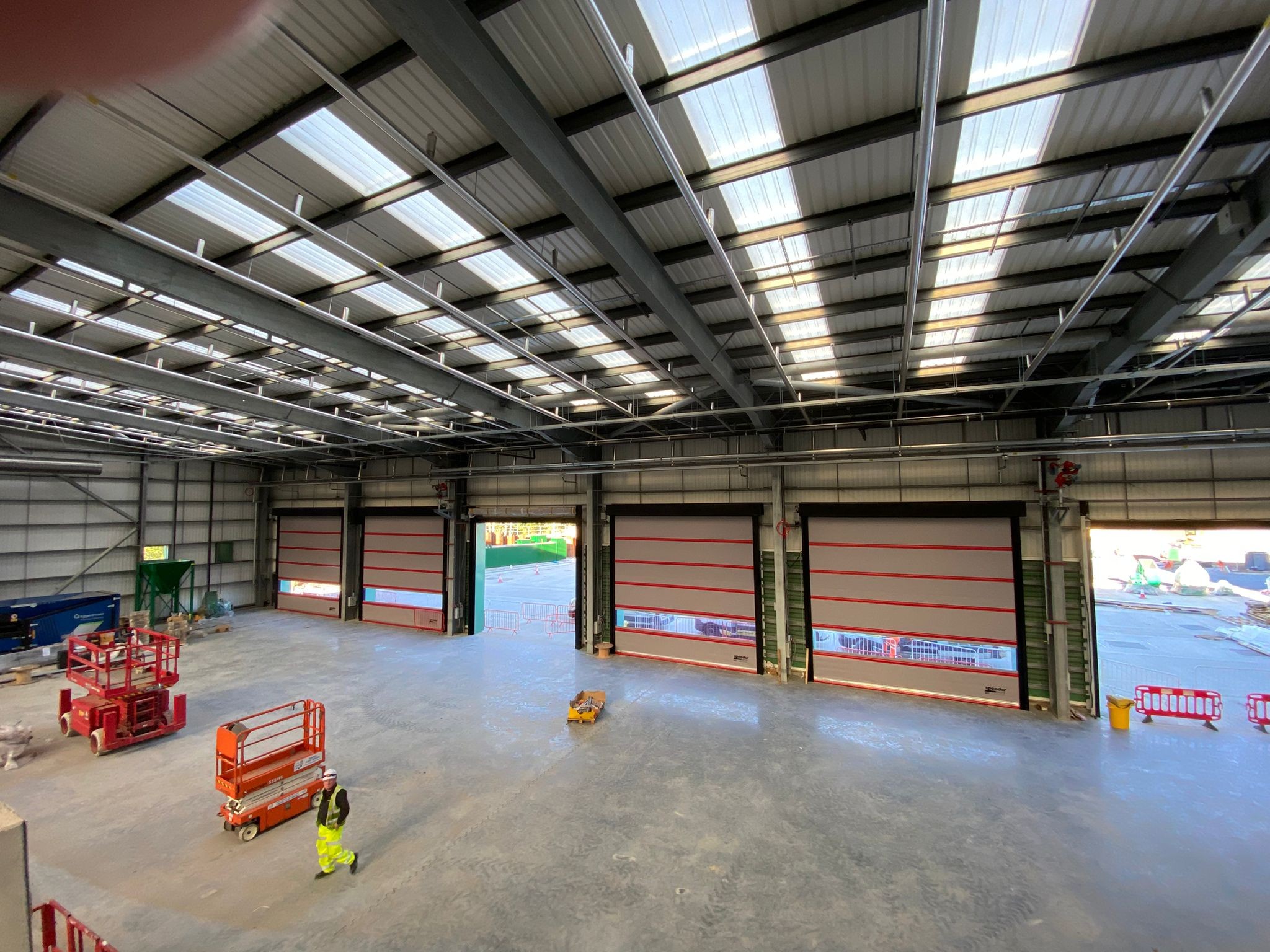The end of centralised control: Automation moves to the field
i.safe MOBILE introduces the Mobile Operator Panel, a technological breakthrough that fundamentally transforms industrial automation in hazardous environments. The system embeds contextual process automation directly into the hands of field operators, ending decades of disconnection between centralised control rooms and field-level reality. Where operators previously worked with static procedures whilst critical decisions lagged behind real-time conditions, the Mobile Operator Panel delivers smart orchestration at the right moment decisions matter most. This is artificial intelligence reimagined for Ex-zones, where human expertise meets sovereign AI processing. The Mobile Operator Panel transforms how industries achieve safety, efficiency, and operational excellence in environments where both are non-negotiable.
Beyond Traditional Human-Machine Interfaces

Traditional human-machine interfaces display information and accept commands. The Mobile Operator Panel does something fundamentally different. It understands the operator's location, active permits, surrounding equipment, and current conditions. The system then coordinates workflows dynamically. The result transforms passive information displays into active decision surfaces that amplify human expertise rather than simply relay data. This represents the shift from Industry 4.0 connectivity to Industry X.0 collaboration. Machines no longer simply connect to networks. They understand operational situations and respond in a way that takes into account both technical constraints and human judgement. The Mobile Operator Panel creates truly adaptive operations where automation serves human decision-making rather than replaces it.
"For too long, industrial automation has forced field teams to adapt to rigid systems designed for control rooms," explains Martin Haaf, CEO at i.safe MOBILE. "The Mobile Operator Panel inverts this logic entirely. We deliver intelligence directly to the field. Operators gain situational awareness and structured decision support at the moment they need it most, not minutes or hours later. This is human expertise amplified by smart automation, and it changes everything about how work is done in Ex-zones."
Legacy systems cause bottlenecks due to centralised decision-making hierarchies. They force operators to wait for approvals, confirmations and releases that are delayed to the conditions on site. The Mobile Operator Panel eliminates these friction losses. It provides information that responds to current plant conditions, approval status and operating parameters directly on the spot. This achieves unprecedented operational transparency while the system complies with the strict safety standards required in ATEX and IECEx-certified environments.
Purpose-built for hazardous environments

The Mobile Operator Panel consists of the following fully ATEX and IECEx certified components, which have been specially developed for potentially explosive atmospheres in Zone 1/21 and Zone 2/22: Firstly, the Android tablet (IS940.x) or the Windows tablet (IS945.x), which offer intrinsically safe mobile platforms with on-device AI inference capabilities. These devices bring contextual process automation through interfaces built from the ground up for potentially explosive atmospheres. The other component is the IS-CS1A.1 Connectivity System, which provides secure synchronisation, powering and integration infrastructure that connects field operations seamlessly to enterprise systems without compromising safety certification.
The edge AI architecture powers this revolution. Sovereign AI processing through high-performance inference engines, including QNN, ONNX Runtime, and TensorFlow Lite, delivers real-time decision support without cloud dependency. This matters critically in hazardous environments. Operations cannot rely on connectivity that may fail precisely when conditions become most challenging. The Mobile Operator Panel processes information locally, maintains data ownership, and continues to function even when external networks become unavailable.
Operations transformed through measurable intelligence
The Mobile Operator Panel delivers quantifiable operational improvements across safety, efficiency, and decision quality. Intelligent automation processes sensor data, video feeds, and operational information through AI-driven analysis. The system provides actionable guidance precisely when conditions shift. It eliminates decision latency and enables adaptive responses that exceed static procedures. Operators receive information tailored to immediate circumstances rather than generic instructions designed for average conditions.
Enhanced safety emerges through predictive technology. Continuous monitoring detects anomalies, compliance deviations, and equipment degradation patterns that human observation might miss. The system triggers immediate alerts and activates preventive workflows before incidents occur. This shifts safety management from reactive response to proactive prevention. Seamless multi-system integration creates a unified operational surface. Native connectivity across legacy control systems through RDP and VNC, process automation via OPC-UA and MQTT, business systems using HTTPS, JSON, and XML, and AI overlays eliminates information silos without requiring infrastructure replacement.
Human-in-the-loop governance ensures transparent AI logic so that operators retain decisive oversight. Every automated action remains explainable, accountable, and subject to human validation. The system recommends, humans decide. Edge-native resilience eliminates cloud dependencies. Local AI processing ensures consistent performance in remote or connectivity-constrained Ex-zones whilst the architecture maintains complete data sovereignty. Operations continue without interruption regardless of external network conditions.
Field-proven applications across critical operations
The Mobile Operator Panel addresses specific operational friction points that constrain efficiency and safety across hazardous environments:
Structured maintenance and inspection workflows boost uptime and safety by guiding every step. From preparation to execution. Smart, contextual automation turns these procedures into live guidance for operators. By adapting steps to real conditions and delivering instant insights on mobile panels, it ensures consistency, safety, and efficiency, everywhere and every time.
SIMOPS are overlapping industrial tasks that can create serious hazards if not well coordinated. Risks are reduced through early hazard identification, a dedicated coordinator, and clear communication. Mobile operator panels give real-time oversight and instant team connectivity for safer operations.
Permit-to-Work (PTW) management streamlines hazardous work authorisation to enhance safety and compliance. Automating PTW with contextual process automation accelerates permit approvals, enforces safety checks dynamically, and adapts requirements based on current conditions. Integrated with mobile panels, it boosts communication, reduces errors, and provides instant visibility across teams. This makes high-risk work safer, faster, and more efficient.
A shift handover transfers key operational and safety information between teams to ensure continuity. Mobile operator panels standardise this process, enabling real-time digital input, secure records, and AI-supported clarity for safer operations.
"We witness the emergence of Contextual Process Automation as a new category in industrial technology," notes Jan Rieks Zonderman, Product Manager Automation at i.safe MOBILE. "This convergence of intrinsically safe hardware, sovereign AI processing, and human-centric design creates interfaces that respond dynamically to field realities. For industries that operate in Ex-zones, this shift from centralised control to contextual orchestration fundamentally reimagines how work happens. The question is no longer whether to automate. The question now is where intelligence is located and how it serves human expertise."
Global Debut at ADIPEC 2025
i.safe MOBILE will introduce the Mobile Operator Panel at ADIPEC in Abu Dhabi from 3-6 November 2025 in hall 15, booth 15118. The launch will highlight how context-aware automation enhances system resilience and enables solutions for holistic global progress.











